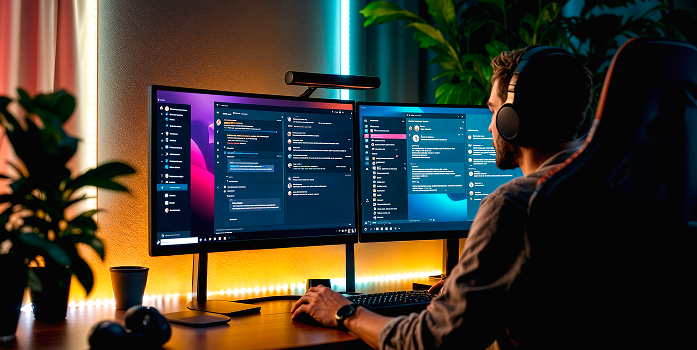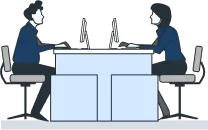Django Usage Statistics: Trends & Market Landscape in 2024
- August 29, 2024
-
5250 Views
- by Ishan Vyas

Introduction: Unveiling the Django Landscape in 2024
Django, a high-level Python web framework, will continue to be a cornerstone for developers globally in 2024. Understanding how many websites use Django, its growing popularity, and its role in various technological fields, including AI, Machine Learning (ML), and MLOps, is crucial. In today’s dynamic landscape of frameworks and languages, many wonder: Is Django dead, or is Django still relevant in 2024? This article explores Django’s recent trends, current usage, and market landscape, focusing on its seamless integration into Python for advanced programming.
Django Development Usage
1. Django for AI Chatbot Development
The Django Python framework is a great option for creating AI chatbots because of its solid Python integration. With resources like TensorFlow and the Natural Language Toolkit (NLTK), programmers can rapidly create chatbots that comprehend user input and respond in a manner akin to that of a human. As AI-based interactive chat becomes more popular, Django usage trends show an increasing reliance on Django for building effective chatbots. Statistics reveal that Python and Django are favored by 83% of developers involved in AI chatbot projects, highlighting their dominance in this sector.
Source:(JetBrains)
2. Django in ML Model Deployment & MLOps
The deployment of ML models and management of MLOps pipelines are critical for modern data-driven applications. Django in 2024 shows its flexibility in integrating with tools like TensorFlow, PyTorch, and Kubernetes. This integration simplifies the process of managing ML models in production, leading to a 25% rise in the usage of Django statistics for MLOps tasks, as reported by JetBrains. This increase reflects Django’s adaptability and growing importance in managing complex ML applications.
Source:(JetBrains)
3. Django in Data Processing & Analysis Usage
Django excels in data processing and analysis when paired with Python libraries like Pandas and NumPy. This combination allows developers to build robust applications capable of handling large datasets and performing complex analyses. In 2023, approximately 25% of data-driven applications built with Django were focused on integrating ML and AI, emphasizing its role in the Django market landscape and its significant contribution to processing and analyzing data.
Source:(JetBrains)
4. Django E-commerce Applications Usage
In the rapidly growing e-commerce sector, Django’s strong architecture supports the development of scalable solutions that incorporate AI-driven recommendation systems and chatbots. Leading e-commerce platforms built on Django reported a 25% increase in user engagement after integrating ML-based recommendation systems, demonstrating how Django statistics highlight the framework’s effectiveness in enhancing user experiences through advanced technologies.
Source:(cvcompiler)
5. Django Content Management Systems Usage (CMS)
Django content management systems leverage the framework’s flexibility and security features. These systems use AI-powered content personalization to offer interactive and tailored content recommendations, significantly improving user retention. A major publishing house using a Django CMS experienced a 12% increase in user retention after deploying AI-driven content recommendations, showcasing the impact of Django’s recent trends in the CMS sector.
Source:(cvcompiler)
6. Django Web Application Development Usage
Django remains a leading choice for developing complex web applications due to its ability to integrate AI chatbots and ML capabilities. A survey by StackOverflow found that 14.65% of developers work with Django for web applications, and 83% reported leveraging its AI integration capabilities, demonstrating how Django usage trends continue to showcase its strength in building intelligent, responsive applications.
Source:(stackoverflow)
7. Django API Development Usage
Django’s integration with Python libraries such as TensorFlow and NLTK makes it an excellent choice for developing AI chatbots. This framework’s robust capabilities allow for the creation of chatbots that understand and respond to user input in a human-like manner. According to DjangoStars Survey 2023, over 80% of developers involved in AI chatbot projects favored Django due to its effective handling of AI interactions. The increasing demand for interactive AI chat solutions underscores Django’s market landscape growth in this space.
Source:(Django Stars)
8. Django Command-Line Interface (CLI) Tools Usage
Django’s management commands and Python scripts are powerful tools for automating MLOps tasks, such as model training and deployment. This capability streamlines the development workflow, making it easier for teams to manage complex ML projects. According to DataRobot, In most cases, before deployment, you should unlock holdout and retrain your model at 100% to improve predictive accuracy. Additionally, it automatically runs feature impact for the model (this also calculates prediction explanations, if available).
(Source: Datarobot)
9. Django Server-side Scripting Usage
Django’s core server-side scripting functionalities are optimized for AI/ML processing and API management. This ensures that applications remain fast and responsive, even when handling large volumes of data. A healthcare company utilized Django’s server-side scripting to build an AI-driven API for real-time patient data analysis & the project resulted in a 35% improvement in response times and customer engagement was increased by 25% boosting operational efficiency.
(Source:cxtoday)
10. Django Legacy Applications Usage
Modernizing legacy Django applications by incorporating AI chatbot features and ML capabilities is becoming increasingly common. This approach allows businesses to leverage their existing infrastructure while staying ahead in the rapidly evolving tech landscape. Integrating AI chatbots into legacy applications has seen a significant uptick, with a report by Gartner predicting that by 2025, 80% of customer interactions will be managed by AI chatbots. Django’s flexible architecture makes this integration seamless.
(Source: Gartner)
11. Django Educational Usage
Django is also a key tool in education, especially in teaching Python, AI chatbot development, and ML. Its simplicity and flexibility make it an ideal choice for preparing future web developers. In fact, Django is used in 70% of university-level Python courses focused on web development and AI integration, underscoring its importance as an educational resource and aligning about 64% with Django’s recent market trends.
Source:(JetBrains)
Conclusion: Leveraging Django Insights for Informed Decisions
As we get closer to 2025, understanding the number of websites using Django and its usage is essential to make informed decisions in AI/ML & MLOps projects. Django is a Python framework, & its extensive connection to Python’s ability to adapt to AI/ML applications is expected to remain a significant actor in the technology landscape. By staying updated with Django statistics, Django usage trends, and the current market landscape, & leveraging Django’s strengths, companies & developers can effectively utilize this robust web framework for their projects.
As Django continues to evolve and adapt to new technologies, its relevance in the web development landscape remains strong. By leveraging these insights, a Django development company can make data-driven decisions that align with current market trends and ensure the success of their web development projects.





 SaaS Development
SaaS Development Web Application Development
Web Application Development Mobile Application Development
Mobile Application Development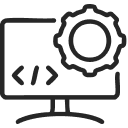 Custom Software Development
Custom Software Development Cloud Development
Cloud Development DevOps Development
DevOps Development MVP Development
MVP Development Digital Product Development
Digital Product Development Hire Chatbot Developers
Hire Chatbot Developers Hire Python Developers
Hire Python Developers Hire Django Developers
Hire Django Developers Hire ReactJS Developers
Hire ReactJS Developers Hire AngularJS Developers
Hire AngularJS Developers Hire VueJS Developers
Hire VueJS Developers Hire Full Stack Developers
Hire Full Stack Developers Hire Back End Developers
Hire Back End Developers Hire Front End Developers
Hire Front End Developers AI Healthcare Software Development & Consulting
AI Healthcare Software Development & Consulting Healthcare App Development
Healthcare App Development EHR Software Development
EHR Software Development Healthcare AI Chatbot Development
Healthcare AI Chatbot Development Telemedicine App Development Company
Telemedicine App Development Company Medical Billing Software Development
Medical Billing Software Development Fitness App Development
Fitness App Development RPM Software Development
RPM Software Development Medicine Delivery App Development
Medicine Delivery App Development Medical Device Software Development
Medical Device Software Development Patient Engagement Software Solutions
Patient Engagement Software Solutions Mental Health App Development
Mental Health App Development Healthcare IT Consulting
Healthcare IT Consulting Healthcare CRM Software Development
Healthcare CRM Software Development Healthcare IT Managed Services
Healthcare IT Managed Services Healthcare Software Testing services
Healthcare Software Testing services Medical Practice Management Software
Medical Practice Management Software Outsourcing Healthcare IT Services
Outsourcing Healthcare IT Services IoT Solutions for Healthcare
IoT Solutions for Healthcare Medical Image Analysis Software Development Services
Medical Image Analysis Software Development Services Lending Software Development Services
Lending Software Development Services Payment Gateway Software Development
Payment Gateway Software Development Accounting Software Development
Accounting Software Development AI-Driven Banking App Development
AI-Driven Banking App Development Insurance Software Development
Insurance Software Development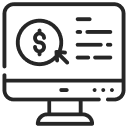 Finance Software Development
Finance Software Development Loan Management Software Development
Loan Management Software Development Decentralized Finance Development Services
Decentralized Finance Development Services eWallet App Development
eWallet App Development Payment App Development
Payment App Development Money Transfer App Development
Money Transfer App Development Mortgage Software Development
Mortgage Software Development Insurance Fraud Detection Software Development
Insurance Fraud Detection Software Development Wealth Management Software Development
Wealth Management Software Development Cryptocurrency Exchange Platform Development
Cryptocurrency Exchange Platform Development Neobank App Development
Neobank App Development Stock Trading App Development
Stock Trading App Development AML software Development
AML software Development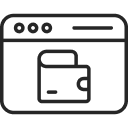 Web3 Wallet Development
Web3 Wallet Development Robo-Advisor App Development
Robo-Advisor App Development Supply Chain Management Software Development
Supply Chain Management Software Development Fleet Management Software Development
Fleet Management Software Development Warehouse Management Software Development
Warehouse Management Software Development LMS Development
LMS Development Education App Development
Education App Development Inventory Management Software Development
Inventory Management Software Development Property Management Software Development
Property Management Software Development Real Estate CRM Software Development
Real Estate CRM Software Development Real Estate Document Management Software
Real Estate Document Management Software Construction App Development
Construction App Development Construction ERP Software Development
Construction ERP Software Development
